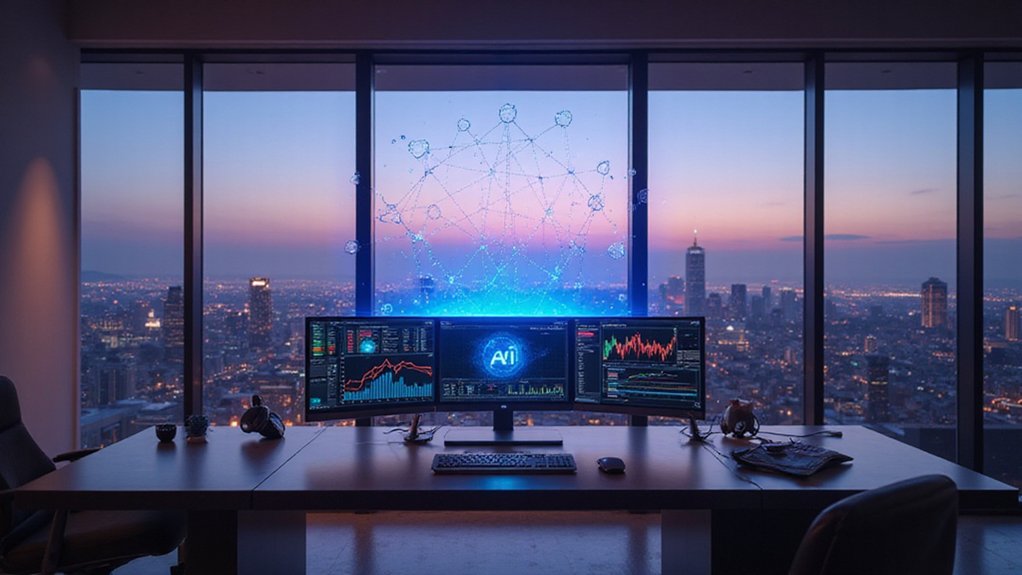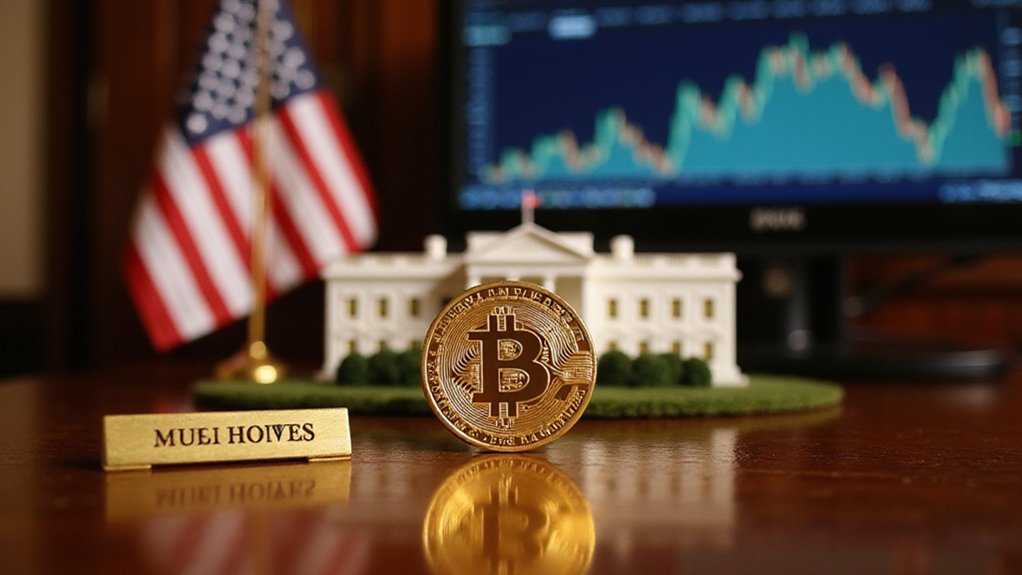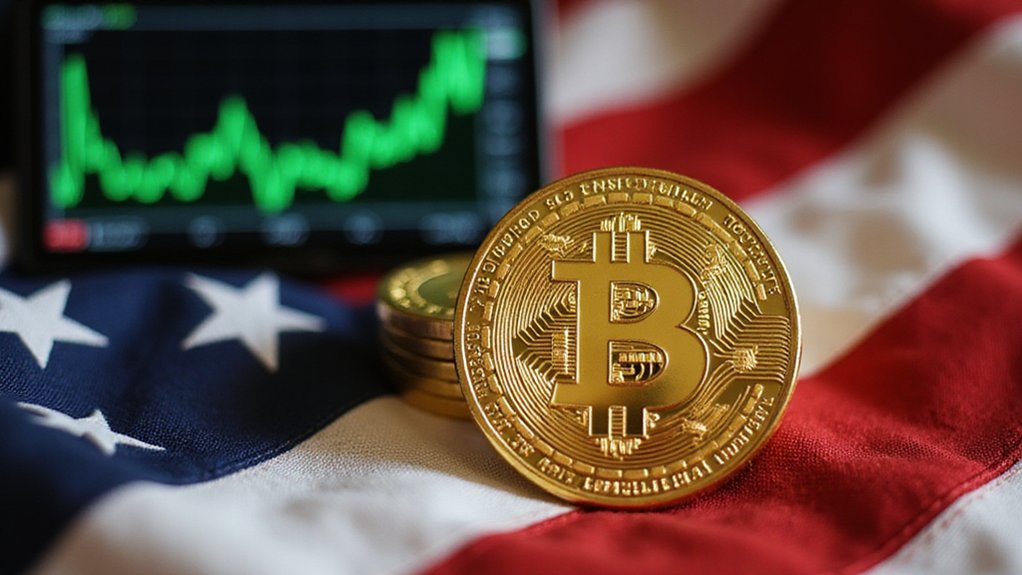Senior advisors managing the AI-crypto intersection must balance technological innovation with regulatory foresight. The FET-AGIX-OCEAN trifecta exemplifies this convergence, targeting ambitious market caps while decentralized AI agents reshape trading algorithms and compliance protocols. Successful advisors distinguish between hype and viable infrastructure plays—Akash Network’s distributed compute solutions merit particular attention—while preparing clients for jurisdictional arbitrage opportunities. This $55B market demands both technical acumen and a philosopher’s temperament for the contradictions ahead.

How does one reconcile the seemingly disparate domains of artificial intelligence and cryptocurrency as they rapidly converge into a singular technological juggernaut?
The merging ecosystem—exemplified by token consolidations like the FET-AGIX-OCEAN trifecta—represents nothing short of a reimagining of digital infrastructure, where decentralized AI agents, data marketplaces, and compute resources coalesce under unified governance structures.
Decentralized AI ecosystems transcend mere technological convergence—they’re rebuilding the foundations of digital sovereignty through unified token structures.
These emerging entities aren’t merely chasing theoretical constructs; they’re targeting substantial $7.5B market capitalizations to compete with centralized AI behemoths. The full operationalization of this alliance is scheduled for May 2025 when the ecosystem will be completely unified.
The infrastructure facilitating this marriage continues evolving at breakneck pace.
Decentralized compute solutions (Akash Network being particularly prominent) address the voracious GPU appetite of distributed AI training while on-chain data marketplaces incentivize the previously thankless task of secure data sharing. AI-powered trading algorithms have democratized portfolio management, making sophisticated financial tools accessible to retail investors.
Meanwhile, autonomous AI agents execute increasingly complex transactions without human intervention—a development that would have seemed implausible mere years ago.
The DeFi landscape, perpetually reinventing itself, has embraced AI with characteristically unbridled enthusiasm.
Algorithmic trading bots now dominate retail markets with predictive analytics capabilities that human traders simply cannot match.
Risk assessment AIs vigilantly scan smart contracts for vulnerabilities, while tokenized real-world assets leverage machine learning for pricing models that might actually reflect reality (imagine that). This technological revolution is expected to contribute significantly to Bitcoin’s projected trading range of $80,440 to $151,200 by 2025.
Regulatory frameworks, traditionally lagging technological innovation by several years, are scrambling to adapt.
Compliance automation tools monitor transactions for AML requirements, while jurisdictional arbitrage sees projects gravitating toward regions offering regulatory clarity for AI-crypto hybrids.
The push for transparent audit trails explaining blockchain transaction decisions reflects regulators’ understandable concern about black-box financial systems.
Investor sentiment couldn’t be more bullish, with AI token valuations propelling sector-wide market capitalization to approximately $55B.
Institutional capital, once skittish about crypto’s volatility, now flows readily into projects demonstrating tangible applications across industries.
The marriage of AI and crypto, once considered speculative fantasy, has evolved into perhaps the most consequential technological convergence of our time.
Frequently Asked Questions
How Do Regulatory Frameworks Impact Ai-Crypto Integration?
Regulatory frameworks greatly impact AI-crypto integration through a delicate balancing act.
Clear regulations enhance transparency and build market trust, yet compliance costs can hamper innovation (particularly for startups lacking deep pockets).
The current fragmented regulatory landscape creates operational uncertainty, while emerging frameworks—like those proposed by recent executive orders—may streamline integration by establishing consistent standards.
Meanwhile, international regulatory coordination remains the holy grail for global AI-crypto ventures, though its achievement seems perpetually just over the horizon.
What Security Risks Arise From Combining AI With Crypto Technologies?
The convergence of AI and crypto creates a peculiar security paradox—sophisticated tools in both defense and offense.
This fusion amplifies traditional vulnerabilities through AI-powered phishing, social engineering (those delightful deepfakes), and algorithmic market manipulation.
Smart contracts become vulnerable to AI-driven exploitation, while privacy faces dual threats from data harvesting and model inversion attacks.
Technical vulnerabilities persist in API configurations, presenting a complex risk landscape where the very technology designed to protect becomes the vector for compromise.
Can AI Reliably Predict Cryptocurrency Market Volatility?
AI demonstrates promising but imperfect cryptocurrency volatility prediction capabilities. Evidence shows outperformance during high-volatility periods, with models like FBLSTMSC-DMPVC achieving sub-1% MAPE scores across major cryptocurrencies.
The crypto market’s unique advantages—24/7 trading cycles, decentralized structure, and high-frequency data—particularly suit AI applications.
However, market manipulation, regulatory uncertainties, and unprecedented events remain significant confounding variables that no algorithm, however sophisticated, can reliably anticipate with consistent accuracy.
How Accessible Are Ai-Crypto Solutions for Non-Technical Investors?
AI-crypto solutions remain challenging for non-technical investors, despite growing accessibility efforts.
User-friendly dashboards and simplified interfaces have emerged, yet regulatory complexity and technical jargon continue to create significant barriers.
While 28% of U.S. adults now hold cryptocurrencies, the sophisticated convergence of AI with blockchain requires considerable knowledge investment.
Educational platforms with AI chatbots show promise, but the gap between institutional capabilities and retail-level understanding persists—often leaving novices traversing turbulent waters with inadequate guidance tools.
What Ethical Considerations Exist When Deploying AI in Crypto Spaces?
Ethical considerations in AI-crypto deployments encompass market manipulation prevention (those high-frequency algos aren’t exactly democratizing finance), transparency obligations regarding “black box” decision processes, and privacy safeguards against surveillance capitalism.
Developers must navigate informed consent for data harvesting, algorithmic accountability for biased outcomes, and potential exacerbation of wealth inequality.
The regulatory void—spanning jurisdictional gaps and enforcement limitations—creates a wild west where ethical frameworks remain woefully underdeveloped compared to technological capabilities.









